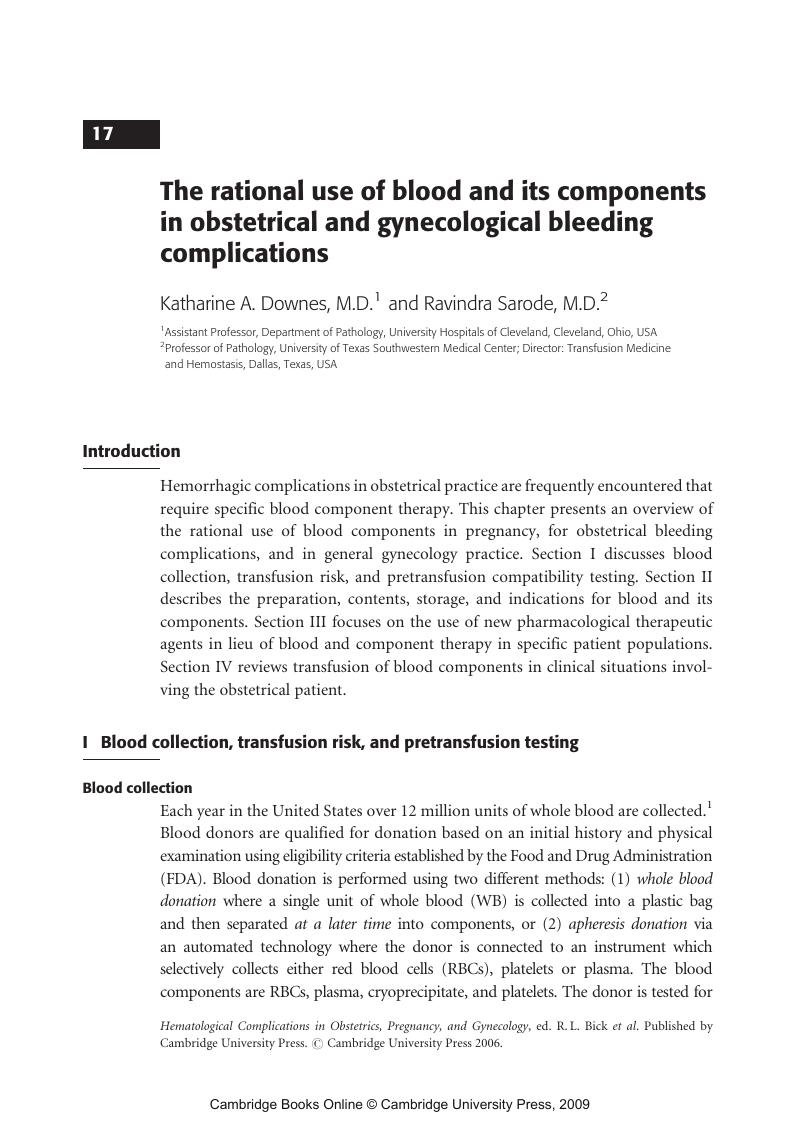Book contents
- Frontmatter
- Contents
- List of contributors
- Preface
- 1 Disseminated intravascular coagulation in obstetrics, pregnancy, and gynecology: Criteria for diagnosis and management
- 2 Recurrent miscarriage syndrome and infertility caused by blood coagulation protein/platelet defects
- 3 Von Willebrand disease and other bleeding disorders in obstetrics
- 4 Hemolytic disease of the fetus and newborn caused by ABO, Rhesus, and other blood group alloantibodies
- 5 Hereditary and acquired thrombophilia in pregnancy
- 6 Thromboprophylaxis and treatment of thrombosis in pregnancy
- 7 Diagnosis of deep vein thrombosis and pulmonary embolism in pregnancy
- 8 Hemorrhagic and thrombotic lesions of the placenta
- 9 Iron deficiency, folate, and vitamin B12 deficiency in pregnancy, obstetrics, and gynecology
- 10 Thrombosis prophylaxis and risk factors for thrombosis in gynecologic oncology
- 11 Low molecular weight heparins in pregnancy
- 12 Post partum hemorrhage: Prevention, diagnosis, and management
- 13 Hemoglobinopathies in pregnancy
- 14 Genetic counseling and prenatal diagnosis
- 15 Thrombocytopenia in pregnancy
- 16 Neonatal immune thrombocytopenias
- 17 The rational use of blood and its components in obstetrical and gynecological bleeding complications
- 18 Heparin-induced thrombocytopenia in pregnancy
- 19 Coagulation defects as a cause for menstrual disorders
- Index
- Plate section
- References
17 - The rational use of blood and its components in obstetrical and gynecological bleeding complications
Published online by Cambridge University Press: 01 February 2010
- Frontmatter
- Contents
- List of contributors
- Preface
- 1 Disseminated intravascular coagulation in obstetrics, pregnancy, and gynecology: Criteria for diagnosis and management
- 2 Recurrent miscarriage syndrome and infertility caused by blood coagulation protein/platelet defects
- 3 Von Willebrand disease and other bleeding disorders in obstetrics
- 4 Hemolytic disease of the fetus and newborn caused by ABO, Rhesus, and other blood group alloantibodies
- 5 Hereditary and acquired thrombophilia in pregnancy
- 6 Thromboprophylaxis and treatment of thrombosis in pregnancy
- 7 Diagnosis of deep vein thrombosis and pulmonary embolism in pregnancy
- 8 Hemorrhagic and thrombotic lesions of the placenta
- 9 Iron deficiency, folate, and vitamin B12 deficiency in pregnancy, obstetrics, and gynecology
- 10 Thrombosis prophylaxis and risk factors for thrombosis in gynecologic oncology
- 11 Low molecular weight heparins in pregnancy
- 12 Post partum hemorrhage: Prevention, diagnosis, and management
- 13 Hemoglobinopathies in pregnancy
- 14 Genetic counseling and prenatal diagnosis
- 15 Thrombocytopenia in pregnancy
- 16 Neonatal immune thrombocytopenias
- 17 The rational use of blood and its components in obstetrical and gynecological bleeding complications
- 18 Heparin-induced thrombocytopenia in pregnancy
- 19 Coagulation defects as a cause for menstrual disorders
- Index
- Plate section
- References
Summary

- Type
- Chapter
- Information
- Publisher: Cambridge University PressPrint publication year: 2006

